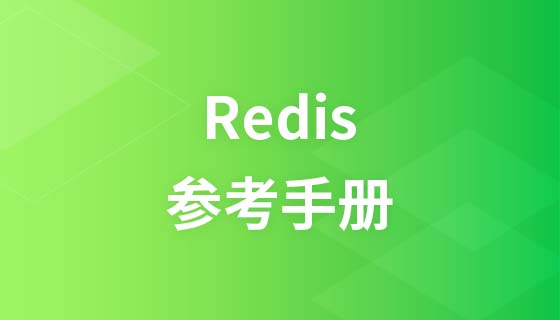
Redis を使用して List オブジェクトを保存する必要があり、リストを操作する必要がない場合は、MC 方式でリストを保存できますが、Jedis などのクライアントはリスト オブジェクトを保存できません。 API を提供します。実装するには 2 つのアイデアがあります:
1. 要素を個別にシリアル化し、
2. リスト オブジェクトをシリアル化して、
を保存するように設定します。この 2 つのメソッドは MC Object メソッドの保存に似ており、このメソッドを使用することは Redis が提供する List の操作メソッドを放棄することを意味します。
import net.spy.memcached.compat.CloseUtil;
import net.spy.memcached.compat.log.Logger;
import net.spy.memcached.compat.log.LoggerFactory;
import redis.clients.jedis.Client;
import redis.clients.jedis.Jedis;
import redis.clients.jedis.JedisPool;
import redis.clients.jedis.JedisPoolConfig;
import java.io.*;
import java.util.ArrayList;
import java.util.List;
import java.util.Random;
/**
* Created by IntelliJ IDEA.
* User: lifeng.xu
* Date: 12-6-11
* Time: 上午11:10
* To change this template use File | Settings | File Templates.
*/
public class JedisTest {
private static Logger logger = LoggerFactory.getLogger(JedisTest.class);
/**
* Jedis Pool for Jedis Resource
* @return
*/
public static JedisPool buildJedisPool(){
JedisPoolConfig config = new JedisPoolConfig();
config.setMaxActive(1);
config.setMinIdle(50);
config.setMaxIdle(3000);
config.setMaxWait(5000);
JedisPool jedisPool = new JedisPool(config,
"*****", ****);
return jedisPool;
}
/**
* Test Data
* @return
*/
public static List<User> buildTestData(){
User a = new User();
a.setName("a");
User b = new User();
b.setName("b");
List<User> list = new ArrayList<User>();
list.add(a);
list.add(b);
return list;
}
/**
* Test for
*/
public static void testSetElements(){
List<User> testData = buildTestData();
Jedis jedis = buildJedisPool().getResource();
String key = "testSetElements" + new Random(1000).nextInt();
jedis.set(key.getBytes(), ObjectsTranscoder.serialize(testData));
//验证
byte[] in = jedis.get(key.getBytes());
List<User> list = ObjectsTranscoder.deserialize(in);
for(User user : list){
System.out.println("testSetElements user name is:" + user.getName());
}
}
public static void testSetEnsemble(){
List<User> testData = buildTestData();
Jedis jedis = buildJedisPool().getResource();
String key = "testSetEnsemble" + new Random(1000).nextInt();
jedis.set(key.getBytes(), ListTranscoder.serialize(testData));
//验证
byte[] in = jedis.get(key.getBytes());
List<User> list = (List<User>)ListTranscoder.deserialize(in);
for(User user : list){
System.out.println("testSetEnsemble user name is:" + user.getName());
}
}
public static void main(String[] args) {
testSetElements();
testSetEnsemble();
}
public static void close(Closeable closeable) {
if (closeable != null) {
try {
closeable.close();
} catch (Exception e) {
logger.info("Unable to close %s", closeable, e);
}
}
}
static class User implements Serializable{
String name;
public String getName() {
return name;
}
public void setName(String name) {
this.name = name;
}
}
static class ObjectsTranscoder{
public static byte[] serialize(List<User> value) {
if (value == null) {
throw new NullPointerException("Can't serialize null");
}
byte[] rv=null;
ByteArrayOutputStream bos = null;
ObjectOutputStream os = null;
try {
bos = new ByteArrayOutputStream();
os = new ObjectOutputStream(bos);
for(User user : value){
os.writeObject(user);
}
os.writeObject(null);
os.close();
bos.close();
rv = bos.toByteArray();
} catch (IOException e) {
throw new IllegalArgumentException("Non-serializable object", e);
} finally {
close(os);
close(bos);
}
return rv;
}
public static List<User> deserialize(byte[] in) {
List<User> list = new ArrayList<User>();
ByteArrayInputStream bis = null;
ObjectInputStream is = null;
try {
if(in != null) {
bis=new ByteArrayInputStream(in);
is=new ObjectInputStream(bis);
while (true) {
User user = (User) is.readObject();
if(user == null){
break;
}else{
list.add(user);
}
}
is.close();
bis.close();
}
} catch (IOException e) {
logger.warn("Caught IOException decoding %d bytes of data",
in == null ? 0 : in.length, e);
} catch (ClassNotFoundException e) {
logger.warn("Caught CNFE decoding %d bytes of data",
in == null ? 0 : in.length, e);
} finally {
CloseUtil.close(is);
CloseUtil.close(bis);
}
return list;
}
}
static class ListTranscoder{
public static byte[] serialize(Object value) {
if (value == null) {
throw new NullPointerException("Can't serialize null");
}
byte[] rv=null;
ByteArrayOutputStream bos = null;
ObjectOutputStream os = null;
try {
bos = new ByteArrayOutputStream();
os = new ObjectOutputStream(bos);
os.writeObject(value);
os.close();
bos.close();
rv = bos.toByteArray();
} catch (IOException e) {
throw new IllegalArgumentException("Non-serializable object", e);
} finally {
close(os);
close(bos);
}
return rv;
}
public static Object deserialize(byte[] in) {
Object rv=null;
ByteArrayInputStream bis = null;
ObjectInputStream is = null;
try {
if(in != null) {
bis=new ByteArrayInputStream(in);
is=new ObjectInputStream(bis);
rv=is.readObject();
is.close();
bis.close();
}
} catch (IOException e) {
logger.warn("Caught IOException decoding %d bytes of data",
in == null ? 0 : in.length, e);
} catch (ClassNotFoundException e) {
logger.warn("Caught CNFE decoding %d bytes of data",
in == null ? 0 : in.length, e);
} finally {
CloseUtil.close(is);
CloseUtil.close(bis);
}
return rv;
}
}
}PS: Redsi のリスト ストレージは、オブジェクトの API をカプセル化していません。また、オブジェクト自体を保存するのではなく、使用されるフィールドのみを保存する傾向がありますか? Redis は In-Mem 製品であり、アプリケーションで使用されます。
Redis 関連の技術記事の詳細については、Redis チュートリアル 列にアクセスして学習してください。
以上がRedisのリストにオブジェクトを保存する方法の詳細内容です。詳細については、PHP 中国語 Web サイトの他の関連記事を参照してください。


